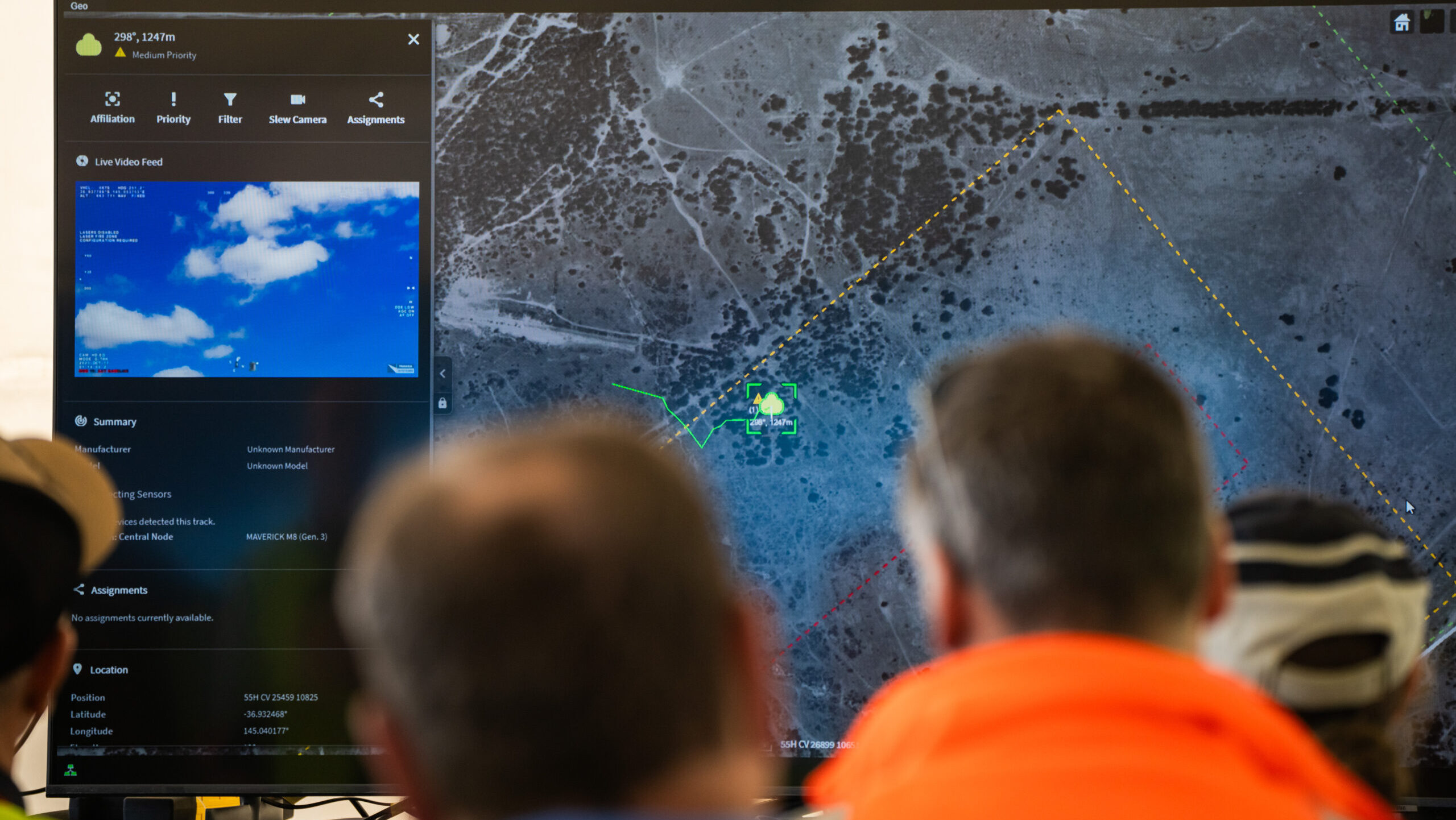
Lockheed Martin Australia’s Agile Shield in operation during operational field test. (Lockheed Martin)
SYDNEY — Lockheed Martin Australia recently marked an important milestone, a Field Capability Demonstration, for a battle management system known as Agile Shield, a tech for which the company clearly has long-range hopes.
The early version of the system, sponsored by the Australian Army, is targeted at tracking and assessing drones threats, but company officials made clear they see it as a broader All Domain player that could be paired with Air6500, the command and control system also made by Lockheed and recipient of a recent key award from the Australian military.
And though the tech is currently being considered by Australia, it was funded in part by the US Pentagon’s Defense Threat Reduction Agency to the tune of “millions of dollars,” according to Tony Lindsay, director of Lockheed’s STELaRLab in Canberra. As such, he said a DTRA official was on hand to watch the demonstration, and Lindsay claims that “he viewed what he saw very positively.”
“The thing that was really appealing was the ability to take sensors and effectors from multiple places that work in multiple ways, and from different manufacturers and integrate them, so he was particularly interested in that aspect to it,” Lindsay added.
In a statement Monday, Lindsay said, “While the demonstration focused on countering Uninhabited Aerial System threats, the Agile Shield battle management system will empower the Australian Defence Force to respond effectively to the increasingly complex and sophisticated array of improvised threats emerging from across land, air and maritime domains. … The successful completion of the Field Capability Demonstration represents a critical milestone in the development of this important sovereign defence capability.”
It’s a big vision for a system so far worth only $9 million AUD ($5.68 million USD). The company won the contract in 2021 as part of the Defense Department’s Counter Improvised Threats Grand Challenge (CIT-GC).
RELATED: Army on the hunt for counter-drone tech as firms show off c-UAS solutions
In keeping with the Australian Defense Department’s push to speed up development, the system went from a simulation in March to a field test in seven months. For the demonstration, the threat was quadcopters, the familiar — usually Chinese-made — drones used by hobbyists, militaries and terror groups around the world.
The battle management system was deployed to Puckapunyal, set up, tested for three weeks and then used in live exercises.
“During the demonstration we went through several scenarios that were designed to demonstrate the current technical capability of the system. In these scenarios, Agile Shield proved its ability to fuse data from these sensors into a common operating picture and represent this data on our human machine interface,” Kevin MacDonald, Agile Shield chief engineer, told reporters during a Friday briefing.
Offering a glimpse of what Agile Shield may offer when connected with Air6500 or its successors, MacDonald noted that it “also generated intelligent engagement recommendations for the operators’ consideration.” After a human authorized a strike, he said “the target drones were successfully defeated.”
Though Lockheed Martin Australia is a subsidiary of the American defense contracting behemoth, the Australia is pushing to elevate what they call “sovereignty” — ensuring Australian weapons contain as much Australian content as possible.
“Every single line of code in this system was written by young Australians. All the thought processes that went into designing the system were done by young Australians, so it’s an entirely sovereign system” Lindsay said. “So I’m incredibly proud of that fact. Having said that, we of course have to partner and want to partner very strongly, and we’re not doing this as an esoteric activity.”
Agile Shield should be able to integrate seamlessly with Air6500 since they are both based on open mission system architectures. Lindsay said that would enable systems to “go from counter-UAS to countering the advanced missile threat at the very, very high end.”
One of the more intriguing capabilities is that Lockheed says Agile Shield “has the intrinsic capability for fully-autonomous operation,” Lindsay said, but “the design philosophy is founded on agility and ability to adapt to the unknown — characteristics that fundamentally mandate a warfighter-centric approach.” Given that US defense policy requires a human in the loop for the final order to fire, Australia is likely to follow that lead for most applications.
Among the smaller companies involved in developing the system were Clearbox Systems, InTrack Solutions, DroneShield, Department 13, Codarra Advanced Systems, Trakka Corp and Silentium Defence.






















